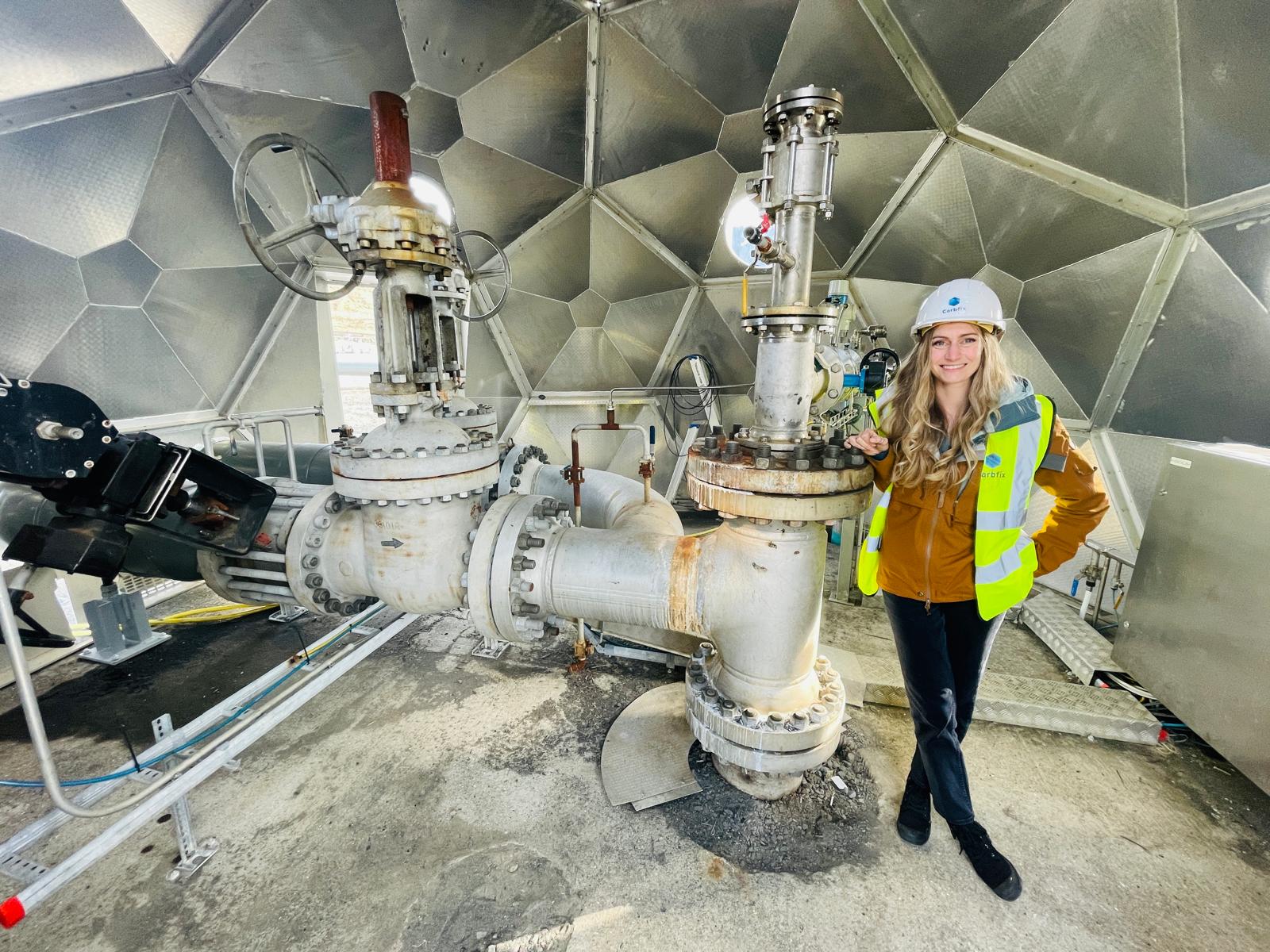Energy Systems program research fellow Rebecca Pearce stands at one of the injection wells at the Hellisheiðarvirkjun geothermal power plant, located in the Hengill area just outside of Reykjavik, Iceland.
Rebecca Pearce, the Cascade Institute’s Energy Systems program fellow and Ultradeep Geothermal Science Lead, visited the plant on an excursion facilitated by the Iceland Geothermal Conference (IGC) that took place May 27 – 29, which Rebecca attended after presenting her co-authored Drilling Technology Feasibility assessment at a workshop preceding the conference.
The workshop, hosted by Clean Air Task Force, reviewed the findings of five technology gap analyses for superhot, ultradeep geothermal projects, the topics being: 1) Drilling, 2) Well completion, 3) Heat Extraction, 4) Surface Facility, 5) Site Characterization. The research findings were very well received, and it was concluded that next-generation geothermal technologies can be unlocked by engineering feats, rather than scientific breakthroughs. The IGC was a spectacular conference that showcased global progress in geothermal technologies, regulations and industry growth, impressing the vast opportunity and bright future of geothermal energy use. A unique feature was the opening speech was delivered by the President of Iceland!
A few fun facts about the Hellisheiðarvirkjun geothermal power plant:
- Plant stats: Produces 360MW and 400 MWth with 66 wells (50 are currently running), 14 of which are injection wells.
- CO2 Emissions g/kWh for various industries (from one of the presentations at the plant)
- Coal: 800 g/kWh
- Gas: 500 g/kWh
- Hellisheidi: 7 g/kWh
- Geothermal (global average): 38 g/kWh
- Solar: ~60 g/kWh
- Wind/Nuclear/Hydro: <30 g/kWh
- Of the 14 injection wells, 4 perform CO2 injection with a technology called CarbFix. The carbon is supplied by the ClimeWorks Mammoth Direct Air Capture facility that supplies CarbFix and the plant with its CO2, which will sequester 36000 tons of CO2 when fully operating (which we also got a tour of)

